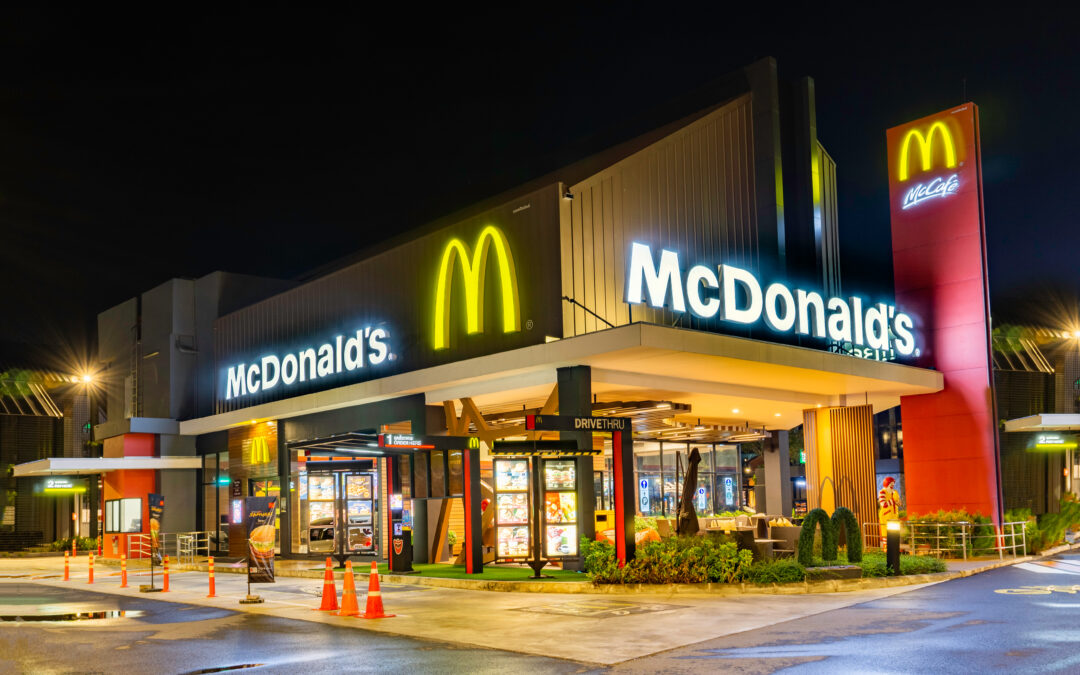Ever wondered how the big corporates actually make their money? In this series, we let you look behind the scenes to show you where the money comes from.
As small business owners, we often look for inspiration from corporate giants who have made a big impact on their respective industries. One such titan that we can learn a lot from is McDonald’s.
Who knew that a single burger joint established in 1940 could transform into a globally recognized brand? There is no secret sauce behind their success but a concoction of strategies that have been meticulously implemented over the years. So, what can we, as small business owners, learn from McDonald’s journey? Let’s dive in!
McDonald’s Humble Beginnings and Smart Business Model
McDonald’s was not always the titan we know today. In its initial years, it was just a humble barbecue restaurant started by two brothers, Richard and Maurice McDonald, in California. However, the business took a turn in 1948 when they introduced the “Speedee Service System,” promising quick service that resonated with the fast-paced American lifestyle.
Another game-changing move McDonald’s made was the adoption of a franchising business model. In 1955, Ray Kroc, a milkshake mixer salesman, was so impressed by their operational efficiency that he bought the franchise rights. By 2021, approximately 93% of McDonald’s restaurants were franchised, earning them revenue not only from sales but also from franchising fees and especially also rents. In 2022, McDonald’s earned around USD 8.7 billion with sales by company-operated restaurants, and USD 14.1 billion by revenues from franchised restaurants. The revenue from franchised restaurants includes also rent income (McDonald’s is the landlord for most franchisees) and royalties. [1] The company’s transformation can be attributed to this innovative approach to diversifying revenue streams.[2]
Key Takeaway: As small business owners, we should remain open to diversifying our revenue streams and not limit ourselves to traditional business models. An innovative approach can be a game-changer!
The Power of Adaptability and Innovation
McDonald’s journey from a small eatery to a multinational corporation is the epitome of adaptability and innovation. As market trends shifted towards health-conscious consumption, McDonald’s evolved too. They incorporated salads, fruit smoothies, and other healthier options into their menu to cater to a wider audience.
Further, they leveraged digital technology to improve the customer experience. The introduction of mobile apps, digital kiosks, and a delivery system not only increased sales but also positioned McDonald’s as a tech-savvy fast-food giant.
Yet, progress doesn’t come without challenges. The brand has had its share of criticism, particularly concerning environmental impact and labor practices. Addressing these concerns, they’re now investing in sustainable packaging and improving employee benefits.
Key Takeaway: Change is the only constant in business. We need to continuously innovate, adapt to market trends, and address criticisms to stay relevant.
Striking the Balance: Localization and Brand Consistency
A crucial aspect of McDonald’s success is its ability to maintain a consistent brand image while adapting its menu to local preferences. They’ve masterfully catered to diverse culinary tastes around the globe, from the ‘Teriyaki Mac Burger’ in Japan to the ‘McAloo Tikki’ in India, demonstrating superb localization.
But localization isn’t a cakewalk. It requires a deep understanding of different markets, stringent quality control, and careful management of supply chains. Despite the challenges, McDonald’s has shown that the rewards are worth the effort.
Key Takeaway: Knowing your customer base and customizing your offerings can significantly boost customer satisfaction. But remember, it’s essential to strike a balance between local adaptation and maintaining your brand identity.
In Conclusion: The McDonald’s Way
McDonald’s didn’t become an international sensation overnight. It was a result of careful strategizing, ceaseless innovation, adapting to change, and understanding their customer base. As small business owners, we can apply these strategies to grow our businesses. We might not operate on the same scale, but the principles are the same.
Let’s remember, every business giant was once a start-up. McDonald’s was no exception. So, keep exploring, innovating, and adapting. Who knows? The next McDonald’s might just be around the corner, and it could be yours!
As their famous tagline goes, “I’m lovin’ it,” let’s continue to love and grow our businesses. To success, one burger at a time!
Sources:
[1] McDonald’s, McDonald’s Reports Fourth Quarter and Full Year 2022 Results: https://corporate.mcdonalds.com/corpmcd/our-stories/article/Q4-2022-results.html
[2] Statista, Number of McDonald’s restaurants worldwide from 2005 to 2020, by mode of operation, https://www.statista.com/statistics/219453/mcdonalds-restaurants-in-north-america-by-country-and-type/
—
Ready to unlock the secrets of successful business partnerships? Gain inspiration from real-life examples and follow our guidelines to thrive. Just schedule a 15-min Strategy Call for free and let’s talk.


Recent Comments